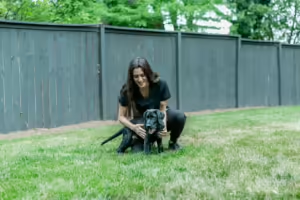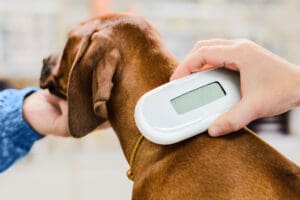Evaluating your pet’s quality of life and deciding to let your pet pass peacefully is deeply personal, but you don’t have to make this decision alone.
At ReadiVet, we understand euthanasia is a delicate topic, and we want this blog to be a compassionate resource to you, your friends and family. It will answer the most common questions about the at-home euthanasia process, our best advice and what to expect on that day.
When is the Right Time?
Sometimes, you just “know” the right time. But often, pet parents struggle to find the middle ground between giving up early and waiting too long.
As a starting point it’s helpful to ask, “Does my pet have more bad days than good days?”
- List the five things your pet loves the most. This includes their unique characteristics like perching on their favorite windowsill, watching TV at your feet or enjoying an extra special treat they can’t resist.
- When 2/5 of their favorite things are gone, your pet’s quality of life may be declining. This is when we most recommend a Quality of Life Assessment.
- When 3/5 of their favorite things are gone, your pet is likely having more bad days than good – and it’s time for the hard goodbye.
- Developed by Dr. Alice Villalobos in 2004, the HHHHHMM Scale is another recommended starting point to determine quality of life and the success of “pawspice”care.
Quality of Life Assessment for Your Dog or Cat
As a guide to this decision, we recommend scheduling a Quality of Life Assessment with one of our vets. We’ll meet your pet and objectively help you with decision-making guidance. We treat these appointments with extra compassion because we understand this is not an intuitive decision for most pet parents.
What happens when I put my pet to sleep?
In the simplest of terms, your pet will receive two injections. The first is a sedative to relax your pet and help them fall asleep. In some cases, we use an IV catheter to administer these injections, but not always. The final injection will be a euthanasia solution, which is the quickest and most peaceful way to help your pet cross the Rainbow Bridge.
Will it hurt?
Absolutely not. Your pet may move or breathe deeply several times after the euthanasia drug is given, but these are reflexes and doesn’t mean your pet is suffering in any way.
What can I expect with an at-home euthanasia experience?
Many pet parents choose at-home euthanasia to alleviate the emotional burden of driving to a clinic, anxiously sitting in a waiting room, and not coming home with their beloved pet.
The blessing of an at-home experience is that your pet is surrounded by familiarity in their final moments – at home, on their bed or favorite spot, surrounded in love by the presence of their family.
Upon our arrival, we explain the at-home process and let each family decide which spot to share their pet’s final moments in. After the last injection is given and your pet has crossed the Rainbow Bridge, we step out and allow as much time as you need to honor and be with your pet. Under no circumstances will we ever rush you, and when you’re ready, we respectfully handle aftercare, including transportation for cremation.
What options do I have for burial and/or cremation?
ReadiVet partners with local, trusted cremation services and handles the entire process on your behalf.
- With private cremation, your pet will be individually cremated. Your pet’s ashes are returned to us in 1-2 weeks and we deliver them to your at home, along with a memorial gift from us.
- With communal cremation, your pet will be cremated alongside other beloved pets, and the combined ashes are scattered in a Garden of Remembrance.
If you do elect to bury your pet at home, make sure to check the local regulations in your area. Our veterinarians do not assist with burial preparations.
Any advice on saying goodbye when it comes to children?
This is often a child’s first experience with death, and it can be challenging for parents to know what to do, what to say, and how to help.
We highly recommend this article as a resource for parents. It includes child-appropriate explanations of euthanasia, understanding death and advice for how to help children grieve depending on their age.
What about my other family pets?
Other family pets can absolutely be present, but because animals don’t understand mortality, it might take 2-3 weeks for them to adjust to the fact their sibling is no longer there.
To help with this transition, you can leave your pet’s belongings out for a week, and slowly remove them over time. Anti-anxiety supplements can also support this transition in the short term but do discuss this with your veterinarian first.
The Hard Goodbye
Our pets don’t live long enough for us – and while they are living, they give us everything they have. As the only medical profession licensed to perform this gift, it’s our honor to provide a compassionate, peaceful and dignified goodbye to your best friend in the comfort of home.
If you think it’s time for the hard goodbye, want a Quality of Life Assessment or simply have questions this blog didn’t answer – book an appointment here, call/text your local ReadiVet office or submit the form below and a member of our team will reach out to you during normal business hours.
Schedule a Quality of Life Assessment*
*At this time we only perform quality of life assessments in our ReadiVet Service Areas.
Check your service area here with your five digit zip code.




